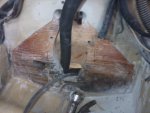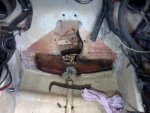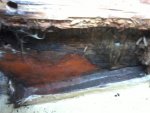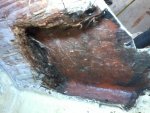- Joined
- Mar 8, 2009
- Messages
- 43,626
Well started with a couple anode holes needing a bit of work and now it appears I'll need to rebuild part of the bottom of the transom. Pulling the transom assembly off noticed all of the bolts had rust but the bottom stud on the starboard side was showing more then the others. When cleaning the holes out with a wire brush some of the wood started to move. Started chipping away in the bottom corner and found the wood under the surface was a bit soft.
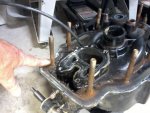
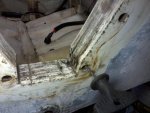
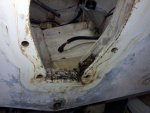
Going to cut away some of the glass on the inside and see what I find. Hope it doesn't go to far. In the pic above it looks like the seal may have started to leak due to the discoloration in the bottom right corner



Going to cut away some of the glass on the inside and see what I find. Hope it doesn't go to far. In the pic above it looks like the seal may have started to leak due to the discoloration in the bottom right corner




















